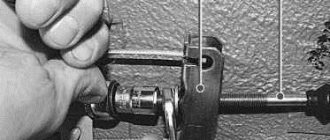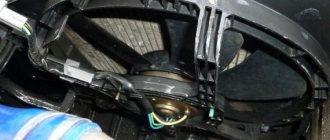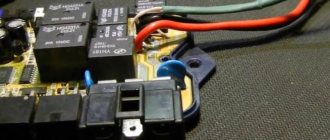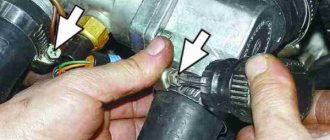In addition to the painful sensation at the fingertips, many people at this moment begin to experience an unpleasant trembling throughout their entire body.
Imagine that you are not a simple car owner, but a taxi driver. In this case, your passenger is a pensioner with a pacemaker.
Although experts assure that such a discharge is not capable of killing or causing significant harm to health, it is still not worth testing this in practice with a sick person.
Electrostatic charge hazard
For many car owners, this becomes a real problem to such an extent that when leaving the car, they lower the sleeves of their sweater or shirt, and only in this way, protecting the exposed parts of their hands, close the door.
We cannot put up with all this and we need to look for solutions. And to find them, you first need to understand the cause of static electricity.
In the vast majority of cases, this is precisely static, and not damage to electrical wires or their breakdown.
Such a discharge, of course, will not kill a healthy person, but if such a spark slips through electronic devices, it may well damage an expensive part.
Imagine if a breakdown occurs while refueling a car near an open gas tank flap?
So, in addition to unpleasant physical sensations, ignoring this problem sooner or later results in more serious consequences.
Harm and danger of the situation
Although at first glance it seems that a static discharge will not cause much harm, you should take a closer look at this problem. When the car body is shocked, a small discharge occurs. A clear example, however, of a different nature, is the piezo lighter.
But if for some reason there are vapors of a flammable substance, such as gasoline, inside the car? This micro-lightning can ignite them, and the consequences of this can be very serious.
Therefore, the question of what to do when the machine is electrocuted should be decided immediately. There is one more extremely important circumstance. While driving, the car driver constantly performs a number of functions. He controls the car, turns on/off various devices - direction indicators, windshield wiper blades, toggle switches for side lights, low beam, high beam. The driver constantly changes gears when the car has a manual gearbox. And if during this action a shock of static electricity occurs, it may suddenly lose control, which is fraught with dangerous consequences.
Causes of Static Electricity
So, what are the main reasons for the accumulation of static charge? There are only two of them.
Firstly, it may appear on the car body due to the friction of air flows while driving. Most often this happens on a dry, hot day.
It's like an experience from a school physics course with rubbing an ebonite stick.
Someone will ask a logical question - everything is clear with a stick, we rub it on a rag, but what does the car have to do with it? The fact is that in the air around us there is a huge amount of tiny particles.
It is against them that the “body” of the car rubs, gradually accumulating a charge. Here is a visual confirmation of the presence of a charge on the car.
See how the foil ball behaves inside the homemade antistatic keychain as it approaches the door.
A similar effect of charge accumulation is observed in strong winds. Moreover, your car doesn’t even need to move, it can calmly stand on the side of the road and still charge like a battery.
As mentioned above, this most often occurs in the hot summer. When the air humidity is more than 85%, the problem disappears by itself.
In this situation, when you come into contact with a door or other part of the car, you act as a conductor through which electricity flows from the body of your iron friend into the ground. Here all the “tzimes” goes to the first person to leave the car.
As some car enthusiasts joke, the best way to protect yourself in this case is to constantly drive with your mother-in-law and leave after her every time.











